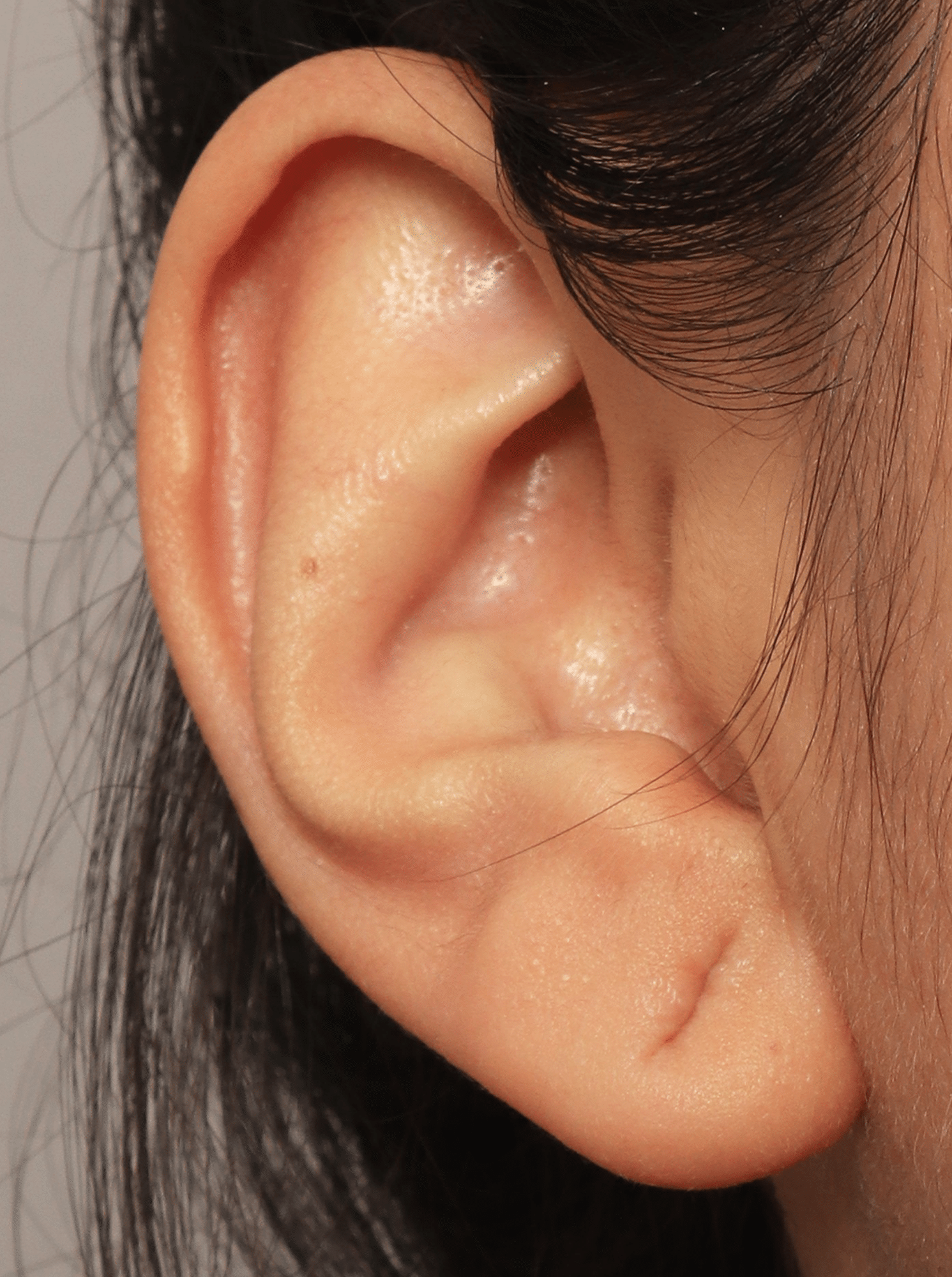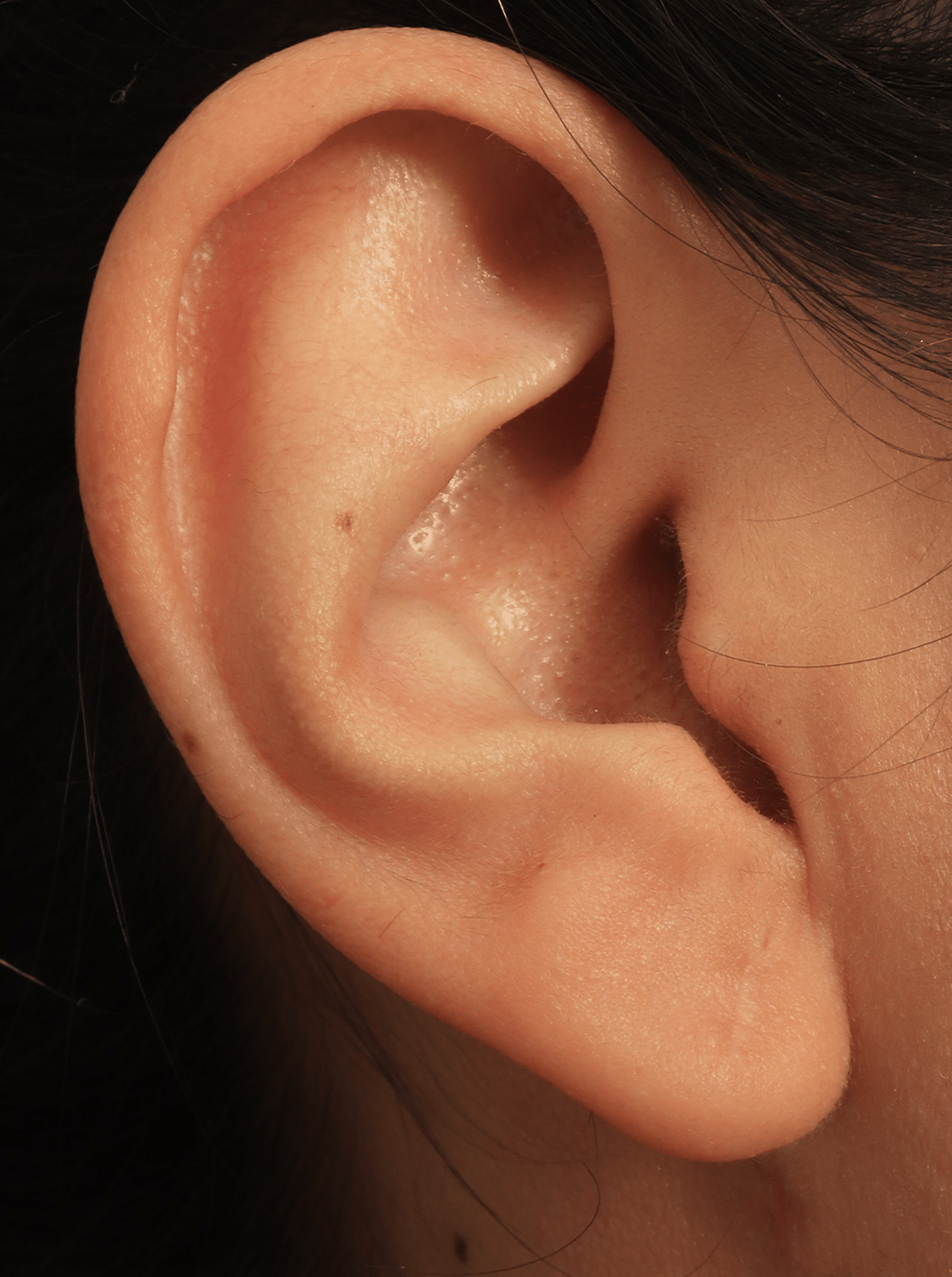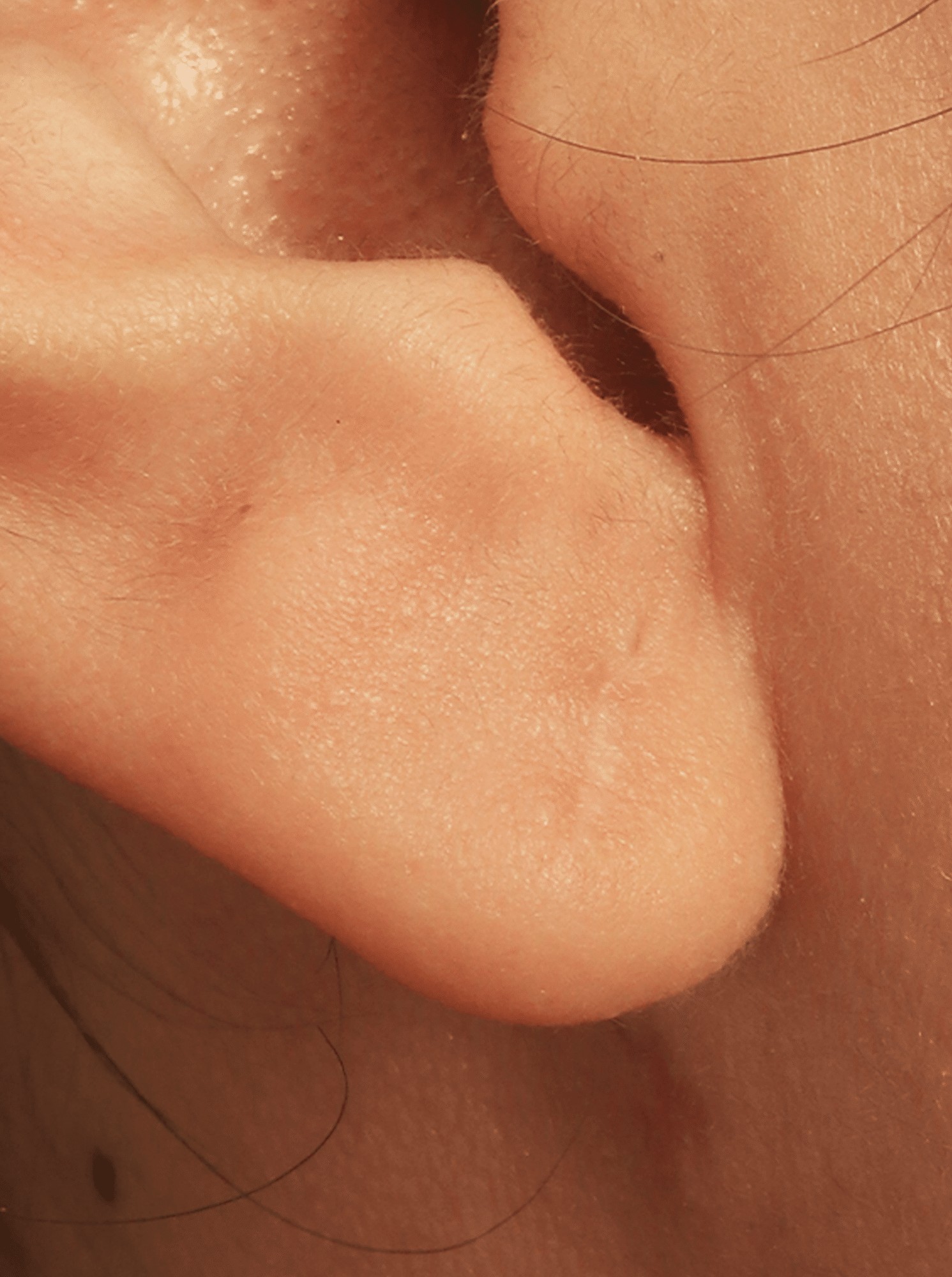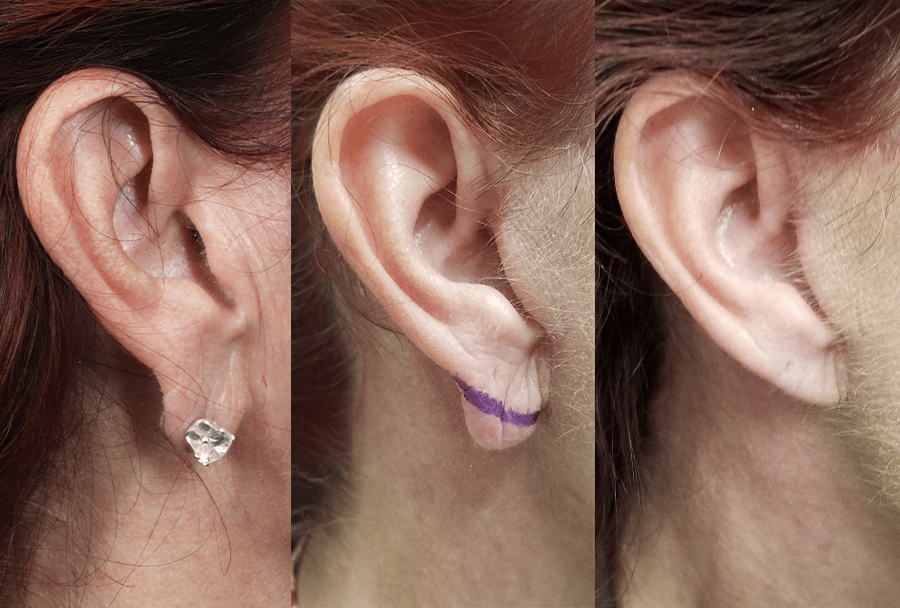What is earlobe repair and reduction?
Earlobe repair is a simple, in-office procedure to re-shape the lowest portion of your ear. The procedure can be performed for various reasons but is most commonly done to repair a stretched ear piercing that has enlarged over time. It can also be used to repair an earlobe that’s been completely torn through from an accidental earring tug. Additionally, earlobe reduction is a slightly different technique used to trim long or hanging earlobes that are often present in more mature ears.
After years of wearing gauges, our patient opted for Earlobe Repair with Dr. Wang. This procedure restored her earlobe and now has allowed her to wear regular earrings again:




Who is a Candidate for Earlobe Repair or Reduction?
You may be interested in earlobe repair or reduction if your earlobes are one of the first things you notice about your appearance. Usually, people notice their earlobes because they are detracting or distracting from other facial features. This may be due to a tear or injury or elongation caused by years of wearing heavy earrings. Some people simply have elongated or misshapen earlobes that they would like to correct. If you find the appearance of your ears unsatisfactory because of your earlobes, repair or reduction may be a great choice for you. This minimally-invasive procedure is ideal for healthy adults who can manage a brief recovery period during which they may need to apply a little extra care to their skin.
How Much Does Earlobe Repair/Reduction Cost in Washington, DC?
The cost of Earlobe Repair/Reduction starts at around $2,000. The price will vary depending on the extent of treatment necessary to deliver your desired results. During your consultation, our surgeons will assess your cosmetic goals and develop a treatment plan tailored to meet them. The starting price is provided for your convenience, and it is important to note that it does not encompass facility or anesthesia fees. The comprehensive cost, inclusive of all potential fees, will be confirmed during your visit.
We also offer financing options, including CareCredit® and Alphaeon®, to help you with the cost of your cosmetic surgery.
How is an earlobe repair performed?
The earlobe is marked as necessary with a skin marker to confirm the surgical plan. This is followed by injection of numbing medicine and a cleansing of the ear. If necessary, the old piercing scar is removed to permit proper closure. The extra earlobe skin is gently and carefully trimmed away and then the earlobe is closed with sutures. These sutures are either dissolvable or will be removed about 1 week later. Topical antibiotic ointment is applied to the sutures twice daily for the week. No other medications are necessary.

We’re as thrilled with our patients’ results as they are. Check out our before-and-after photo gallery and see for yourself the kind of work our talented surgeons do.
If necessary, sutures will be removed about 7 days following the procedure, however, you can resume your normal daily routine immediately. The ear will heal over the subsequent weeks with little discomfort.
Having an injured or oddly shaped earlobe may cause physical and emotional consequences. The earlobe repair procedure can eliminate both. The procedure may close widened piercings that garner unwanted attention and pose a risk for catching on clothing or other objects. A split earlobe, as well, may get stared at by others. These conditions may cause you to feel self-conscious at work or in your personal life, and they cannot be hidden. Earlobe repair restores an optimal shape to your ears, and, in doing this, the procedure refines part of the frame of your face. Your ears will be more symmetrical and proportionate, allowing all eyes to be on your best facial features.
The earlobe repair process may look slightly different for you than for anyone else. Generally, this treatment is performed to repair long or enlarged piercing, split earlobes, or sagging earlobes caused by aging or heavy earrings.
You can expect to see the results of your repair procedure immediately. You’ll have a chance to look at the repair work before we apply the bandage to your ear at the end of your procedure. Keep in mind that you may experience some swelling and bruising. You may have a few stitches to close your incisions, which may look red for a week or two. Even with these side effects, the improved shape of your earlobe will be impossible to miss!
No. Your earlobe is only part of the outermost area of the ear. It is far from the inner ear and the structures that are involved in your hearing.
Yes! Our experienced, board-certified plastic surgeons can perform various techniques on the earlobes to address your concerns. In a general sense, the process involves making an incision in a relevant part of the earlobe, trimming excess tissue, and joining the two new edges with stitches. The only difference between various techniques is the area in which the incisions are made and from which tissue is trimmed. Your doctor will explain the details of your procedure during your consultation after they’ve examined your earlobes.
Your repaired earlobes may be sore and tender for a week or two. You’ll be instructed to wash the repaired area at least once a day with gentle soap and water, and may need to take care when brushing and styling your hair. While the bulk of swelling and bruising usually resolves in one to two weeks after surgery, it takes about six weeks for full healing to occur. It is at that point when you can schedule ear piercing if you wish.
In many cases, we can repair both earlobes in the same visit. There may be exceptions, so talk to your doctor. During your consultation, you can expect a thorough discussion regarding your desired improvement, your ideal earlobe shape, and what to expect during and after the procedure. At this visit, you can also receive answers to all of your questions, enabling you to make a fully-informed decision about how to proceed with your earlobe repair or reduction.
Usually, earlobe repair or reduction treatment takes no more than half an hour for one earlobe. If you combine the procedure to include both earlobes, expect to be in the office for 60 to 90 minutes.
Scarring is inevitable after this minor surgical procedure. Please inform your doctor if you have a history of thick scarring or keloid scars. In most situations, the scar that results from earlobe repair or reduction is very subtle. Following your post-treatment care instructions is an excellent way to promote optimal healing and tissue recovery. Once your stitches have dissolved or been removed and your skin has fully closed, you may use a scar ointment or cream to further assist your healing process.
The primary post-treatment instructions that you will follow after your earlobe repair involve getting the area wet and avoiding unnecessary disturbance to the area. You may shower and wash your hair while you recover from your earlobe repair, but your doctor may advise you to avoid baths, hot tubs, and swimming in general for about a week. You may also receive some instructions regarding activity restrictions. While your earlobes are healing, you want to keep them protected from accidents. To achieve this, you should not play sports, especially contact sports. You may be advised to avoid wearing a helmet or using other headgear for a week to two weeks, and will most likely be advised to avoid strenuous activities for about two weeks.
Can I re-pierce my ears after an earlobe repair?
Certainly! And we have the tools in our office to perform it quickly and safely. We generally advise waiting 4-6 weeks after the repair before re-piercing.


